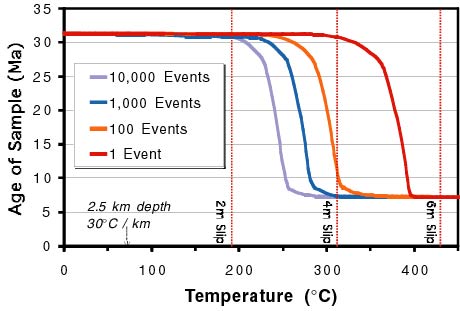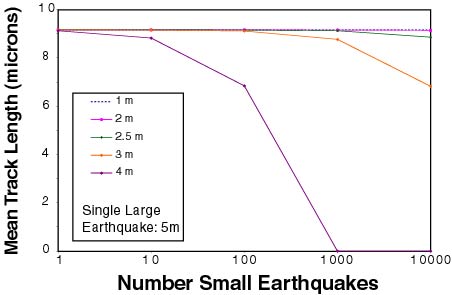This confusing figure shows the effect of having multiple earthquakes all with equal slip. The relative amount of slip is represented on the x-axis as the temperature increase per event. The y-axis indicates the predicted fission track age. In the above example, a single 6 m slip event will completely reset fission track ages. Additional slip events will therefore have no impact on the samples. One 4 m slip event will have minimal effect, but 100 identical 4 m slip events will almost completely reset ages. With 3 m slip events, it will take 10,000 identical events to cause a measurable difference in fission track age.


The Effects of The Largest Event (above)
This confusing figure shows the effect of having one large earthquake (5 m slip) and a given number of smaller earthquakes all with equal slip. It shows that the single largest event dominates the impact on fission track lengths. For every 5 m slip event, you would need 10,000 slip events with 3 m each to cause a measurable change compared to just having that single 5 m slip event alone. With events that are similar in size like 5 m slip events and 4 m slip events, the results begin to approach the results for equal size events shown in the top plot. You would need 100 earthquakes with 4 m of slip for every one earthquake with 5 m of slip for the smaller earthquakes to have a measurable effect.